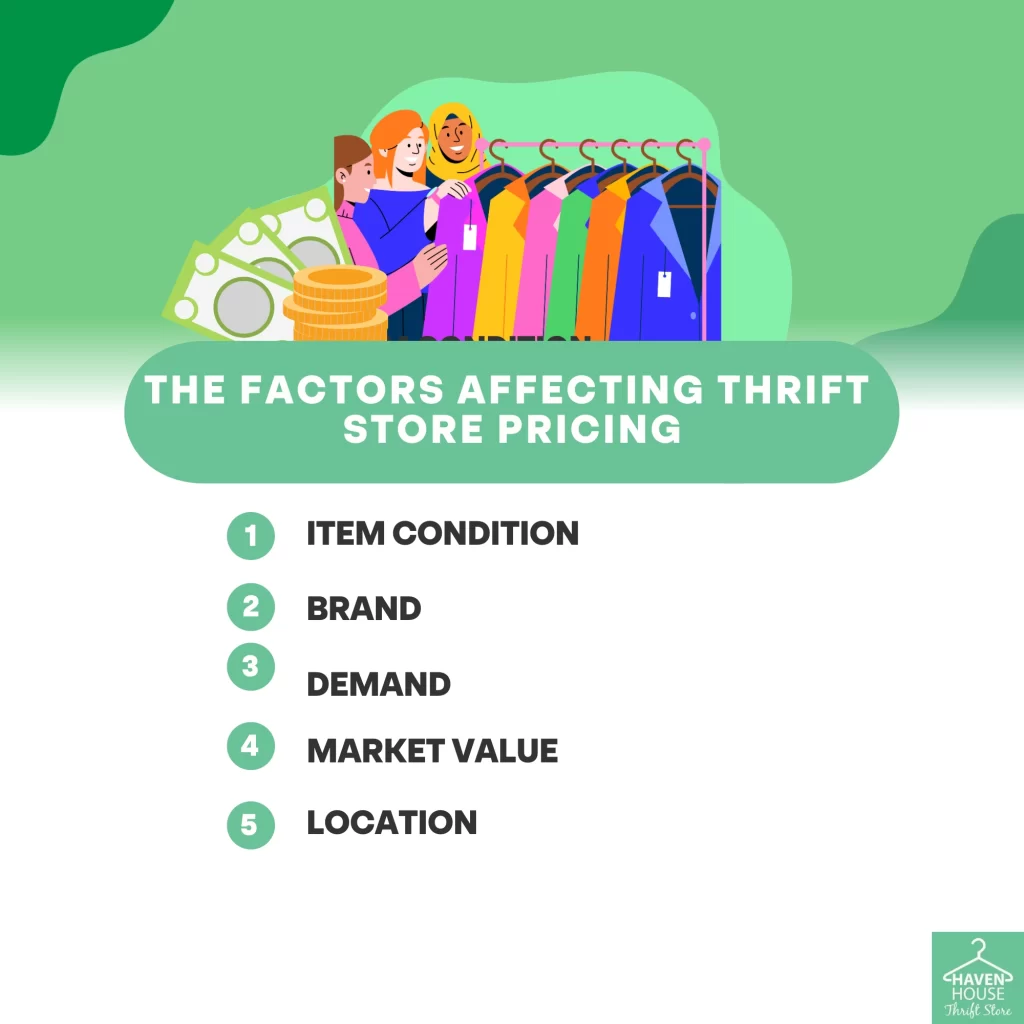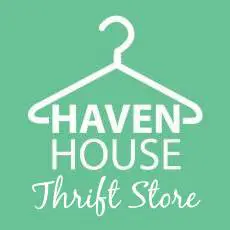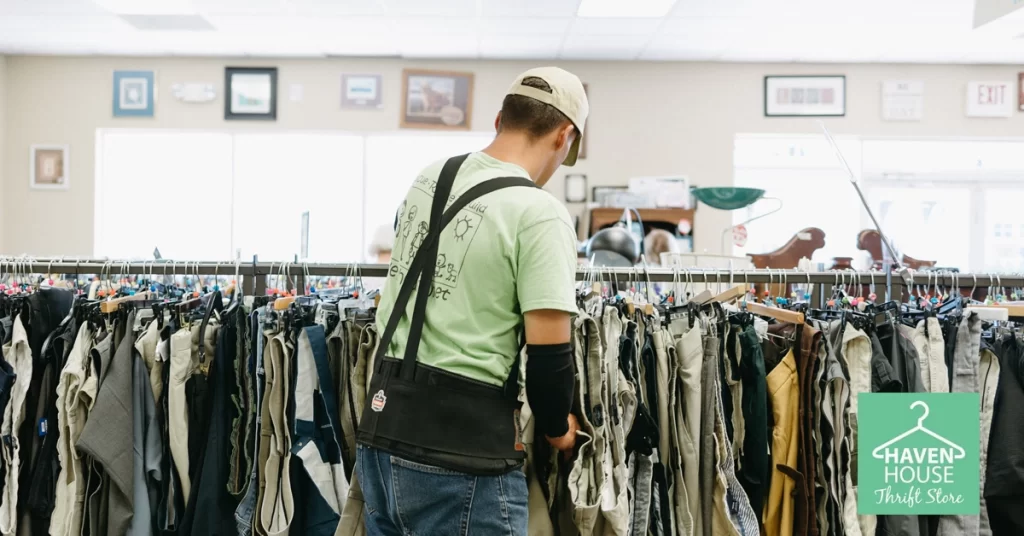In the world of thrift shopping, knowing how to price items is key. We’ll show you the ins and outs of thrift store pricing to help you find the best deals and make the most of your budget.
Are you a bargain hunter? Do you love the thrill of finding unique treasures at affordable prices? If so, thrift stores are your haven. These treasure troves of second-hand goods offer a wide array of items, from clothing to furniture, at a fraction of their original cost.
But have you ever wondered how thrift stores determine the prices of their goods? Is there a method to the madness of those price tags? In this thrift store pricing guide, we’ll take you behind the scenes of the thrift store world and give you the lowdown on how pricing works.
The Importance of Pricing in Thrift Stores
Pricing is essential for the success of a business, and thrift stores are no exception. These stores rely on attracting customers who are looking for affordable options, so finding the right price point for their merchandise is essential.
Unlike traditional retail stores, where items are priced based on their cost to the retailer and desired profit margin, thrift stores follow a different approach. Their pricing is influenced by various factors, including the item’s condition, brand, demand, and market value.
Thrift stores walk a fine line between offering affordable prices and maximizing their revenue. While their primary goal is to sell items quickly, they also need to ensure they are making a profit. This delicate balancing act requires careful consideration of pricing strategies.
The Factors Affecting Thrift Store Pricing

1. Item Condition
The condition of an item is one of the most significant factors in thrift store pricing. Items in excellent condition, with minimal wear and tear, are more likely to be priced higher than those in poorer condition. Some thrift stores even have different pricing tiers based on the condition of the items, allowing them to cater for customers with varying budgets.
2. Brand
The brand of an item can also impact its price in a thrift store. Well-known brands and designer labels are often priced higher due to the value created by brand recognition and demand. However, it’s important to note that the pricing of branded items in thrift stores is still significantly lower than their original retail prices, making them a steal for savvy shoppers.
3. Demand
The level of demand for a particular item plays a role in thrift store pricing. If an item is popular and in high demand, the thrift store may price it slightly higher to capitalize on its desirability. On the other hand, if an item has been sitting on the shelf for a while, the store may choose to lower its price to encourage a quick sale.
4. Market Value
Market value, or the going rate for a similar item in the broader market, is another consideration for thrift store pricing. If an item is in demand and its market value is higher, the thrift store may price it accordingly. Conversely, if the market value for a certain type of item is low, thrift stores may adjust their prices to attract buyers.
5. Location
The location of a thrift store can also influence its pricing. Stores situated in upscale neighborhoods or near affluent communities may price their items a bit higher, taking into account the higher purchasing power of their target market. On the other hand, one may expect to find lower average thrift store prices in budget-conscious areas, as the stores aim to cater to their customers’ financial constraints.
The Different Thrift Store Pricing Strategies
1. Fixed Pricing
Under this strategy, thrift stores assign a fixed price to each item. This approach is commonly used for items with a predictable and stable market value, such as basic clothing and household goods. Fixed pricing offers convenience for shoppers, as they can readily see the cost of the item without the need for price negotiations.
2. Variable Pricing
Variable pricing, also known as tiered pricing, is when thrift stores categorize items into different price ranges. This strategy is often used for items like furniture, electronics, and collectibles, which can be priced based on their condition, brand, and demand. By implementing variable pricing, thrift stores can cater to a broader customer base, from budget-conscious shoppers to those willing to splurge on unique finds.
3. Auction Pricing
Some thrift stores opt for auction-style pricing for rare or high-value items. In this strategy, the store sets a starting price, and customers can bid on the item. The highest bid sets the final price. Auction pricing can be an exciting way to snag a coveted item, but it also carries the risk of the price escalating beyond what some thrift store regulars are willing to pay.
4. Discount Pricing
Discount pricing involves reducing the price of an item over time if it doesn’t sell. This strategy is commonly used for items that have been on the thrift store’s shelves for an extended period. By gradually lowering the price, thrift stores aim to create a sense of urgency among shoppers, enticing them to make a purchase before someone else snatches up the deal.
The Bottom Line
Thrift store pricing is a blend of art and science. It considers the item’s condition, brand, demand, and market value, all while aiming to attract customers with affordable prices. Different pricing strategies, such as fixed pricing, variable pricing, auction pricing, and discount pricing, are employed to maximize sales.
Thrift store shopping, with its affordable prices and potential for unique finds, remains a favorite choice for those seeking a budget-friendly and sustainable shopping experience. So, the next time you embark on a thrift store adventure, armed with the knowledge of how pricing works, you’re ready to make the most of every deal that comes your way.
Score the Best Thrift Store Finds in Carthage
Found yourself in Carthage with lots of time to explore? Drop by Carthage thrift stores and hunt for vintage pieces and trinkets. Haven House Thrift Store and other local thrift stores are waiting to offer you their finest selection of second-hand treasures. Whether you’re hunting for clothing, furniture, or rare collectibles, these thrift stores have something for everyone. Get ready to embark on a thrifty adventure in Carthage!




